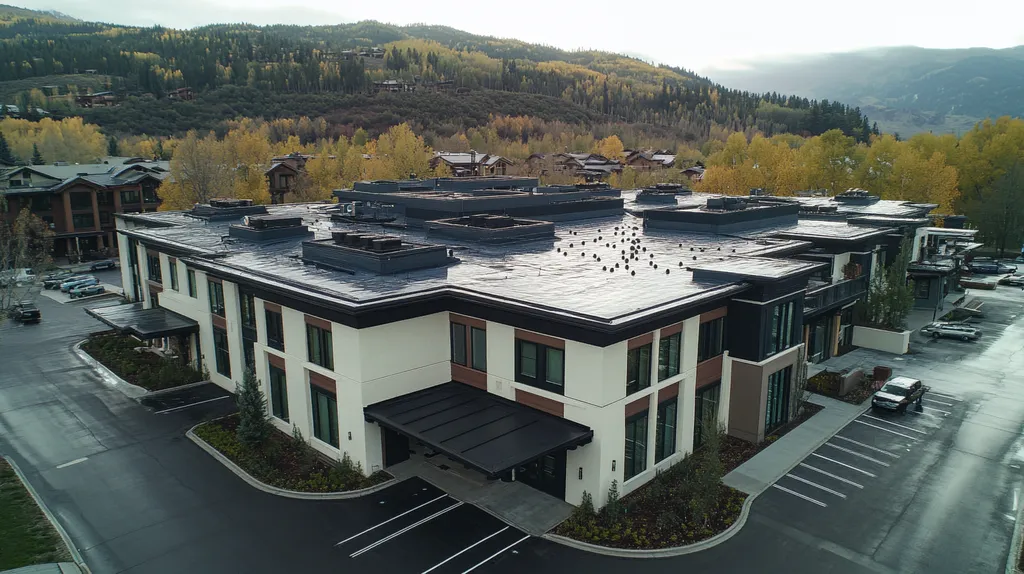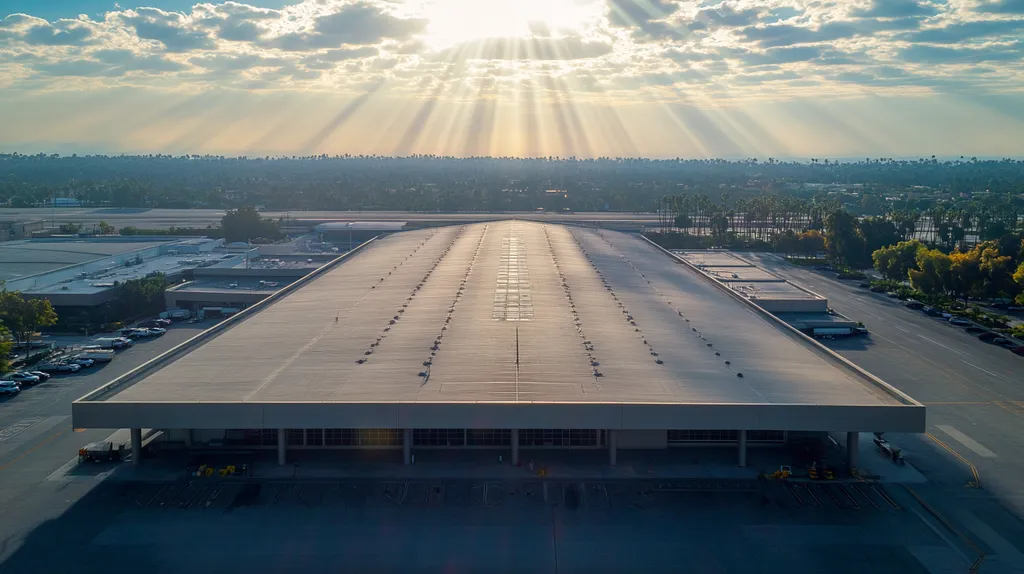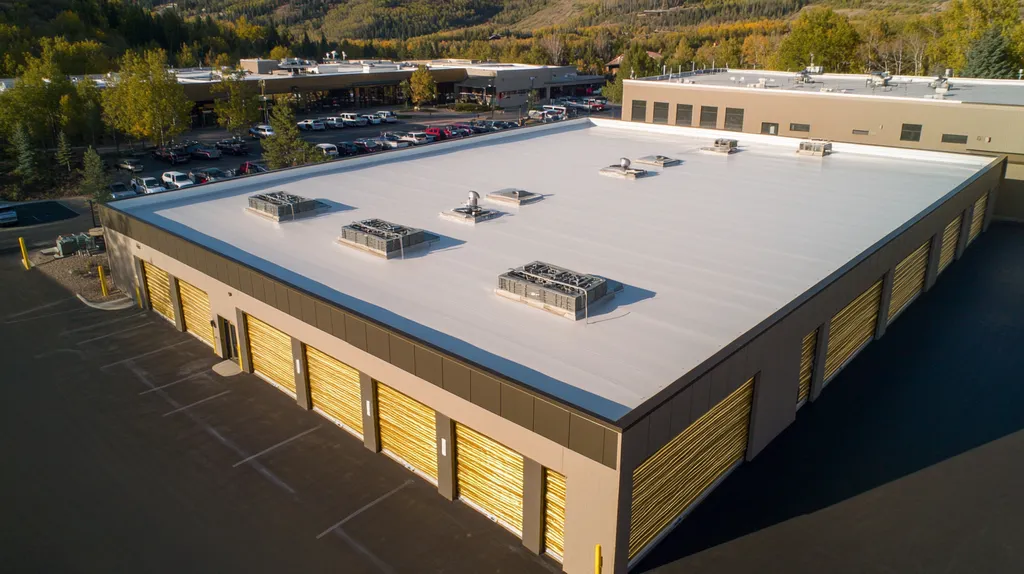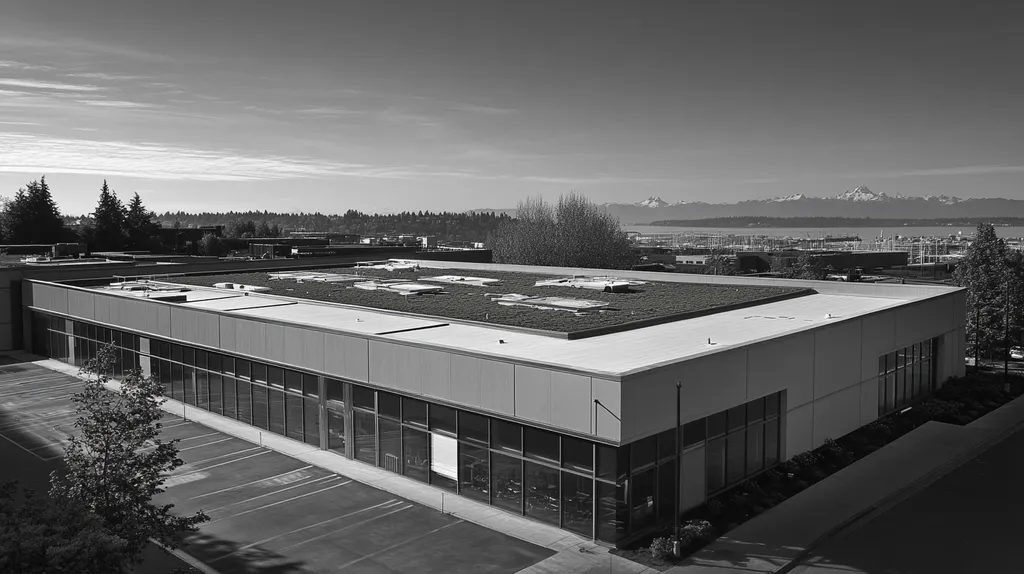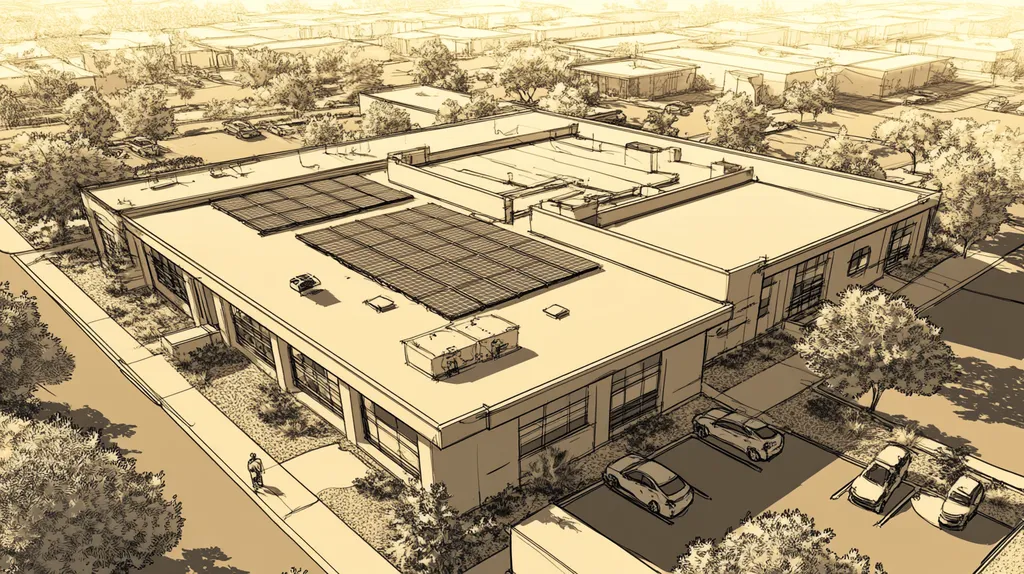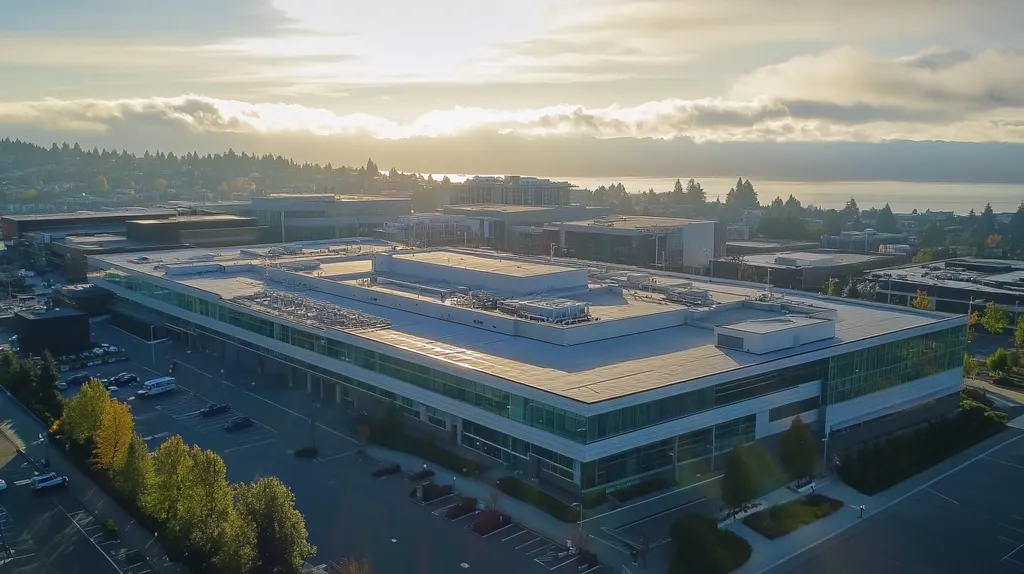Commercial property owners face a critical misalignment between established fire-resistance requirements and actual roof protection needs, resulting in over $15 billion in annual fire-related losses across the United States.
Despite meeting current insurance standards, 42% of commercial roof systems fail catastrophically during fire events, revealing fundamental flaws in how we evaluate and regulate fire resistance.
This analysis examines why traditional approaches to fire-resistant roofing fall short, exposing systemic issues in insurance requirements while offering data-driven solutions for comprehensive building protection.
SECTION 1: CURRENT PRACTICES
Fire protection standards for commercial roofs have remained largely unchanged for decades, despite evolving building materials and construction methods. With fire-related insurance claims exceeding $15 billion annually in commercial properties, outdated requirements leave many buildings vulnerable. Current practices often prioritize minimum compliance over comprehensive protection, creating gaps between perceived and actual fire safety.
Standard Fire-Resistance Roof Ratings Explained
Fire-resistance ratings classify roofing assemblies based on their ability to withstand fire exposure under standardized testing conditions. These ratings, ranging from Class A to Class C, measure both external fire spread and penetration resistance.
Class A materials must withstand severe fire exposure for extended periods, maintaining structural integrity while preventing flame spread. This classification typically includes materials like concrete, clay tiles, and specially treated metal roofing systems.
Class B and C ratings offer progressively lower levels of protection, with shorter resistance times and less stringent requirements for flame spread prevention. These classifications often apply to modified bitumen and certain synthetic membrane systems.
Testing procedures involve direct flame application, burning brand tests, and flying ember simulations to replicate real-world fire scenarios. These standardized methods ensure consistent evaluation across different roofing systems.
Common Insurance Requirements and Classifications
Insurance companies evaluate multiple risk factors when determining coverage requirements and premiums for commercial properties. These assessments consider building characteristics, fire protection systems, and potential loss scenarios.
The probability of fire occurrence and potential loss extent directly influence insurance requirements and costs. Insurers analyze structural elements, building contents, and available fire suppression resources when setting coverage terms.
Many policies mandate specific fire-resistance ratings based on building use and location. Higher-risk occupancies often require Class A materials, while lower-risk structures may permit Class B alternatives.
Insurance risk evaluations factor in both active and passive fire protection measures, including roofing system performance ratings and maintenance protocols. (source: U.S. Fire Administration)
Typical Compliance Pathways for Commercial Roofs
Meeting fire-resistance requirements typically begins with material selection and system design. Building owners must verify that chosen assemblies carry appropriate ratings for their specific application.
Installation procedures must strictly follow manufacturer guidelines to maintain rated performance. This includes proper sequencing of components and attention to critical details like penetrations and edge conditions.
Regular inspections ensure ongoing compliance with fire-resistance requirements. These evaluations should identify potential compromises to the roofing system’s fire-resistant properties.
Documentation plays a crucial role in demonstrating compliance. Property owners must maintain records of initial certifications, inspection reports, and any modifications that could affect fire performance.
SECTION 2: SYSTEMIC ISSUES
The ongoing tension between fire-resistance regulations and commercial roof insurance requirements creates significant vulnerabilities for property owners. Currently, many businesses underestimate the risks associated with fire hazards, relying heavily on generic insurance standards that offer little actual protection. According to industry reports, nearly 25% of commercial roof failures stem from inadequate fire-resistance measures, highlighting an urgent need for reform. This section examines the systemic issues in the industry that exacerbate the problem: the oversimplification of risk by insurance companies, inconsistent enforcement of fire-resistance standards, and an overreliance on material ratings rather than real-world performance.
Insurance-Driven Oversimplification of Risk
Insurance risk is determined by multiple factors including building characteristics, size, contents value, and available fire protection systems. Many insurers, however, apply standardized metrics that fail to account for unique property features and specific fire hazards.
Two buildings in the same area may face drastically different fire risks based on their use and construction. Yet current insurance practices often overlook these critical distinctions, potentially leaving properties vulnerable to fire-related incidents.
The probability of fire occurrence and potential loss extent directly influence insurance requirements and costs. However, many policies prioritize cost reduction over comprehensive protection, creating dangerous gaps in coverage. (source: U.S. Fire Administration)
This simplified approach to risk assessment perpetuates a cycle of complacency among property owners. Many operate under false assumptions about their fire protection, leading to inadequate preparation and preventative measures.
Inconsistent Enforcement of Fire-Resistance Standards
Fire-resistance standards vary significantly across regions and jurisdictions, creating inconsistent enforcement in the commercial roofing sector. This lack of uniformity leaves property owners vulnerable to fire hazards and creates confusion about compliance requirements.
Local building codes often conflict with national standards, leading to disparate levels of fire protection. Some regions maintain strict oversight while others operate with minimal inspection requirements.
These variations in enforcement create significant disparities in building safety. A facility that meets code in one jurisdiction might fail inspection in another, despite facing similar fire risks.
Without standardized enforcement, property owners struggle to implement consistent fire protection measures. This challenge is particularly acute for businesses operating across multiple jurisdictions.
Overreliance on Material Ratings Over Performance
The industry’s focus on material ratings rather than system performance creates a dangerous disconnect in fire protection. Many property owners mistakenly equate high ratings with guaranteed fire safety, overlooking crucial factors like installation quality and maintenance.
Laboratory testing conditions rarely reflect real-world fire scenarios. A roofing system’s actual performance can differ significantly from its rated capabilities when exposed to unexpected fire patterns or environmental conditions.
Regular maintenance and inspection protocols often receive insufficient attention due to overconfidence in material ratings. This neglect can compromise even the highest-rated roofing systems over time.
Performance-based evaluation methods offer a more reliable approach to fire protection. These assessments consider the entire roofing system’s behavior under various conditions, providing more accurate insights into actual fire resistance capabilities.
SECTION 3: MISSED OPPORTUNITIES
The gap between fire-resistance standards and actual building protection continues to widen, with devastating consequences. Recent data shows that 40% of commercial building fires result in complete roof system failure, despite meeting minimum code requirements. This disconnect stems from three critical oversights: inadequate whole-building fire prevention strategies, resistance to adopting new roofing technologies, and insufficient maintenance protocols. By addressing these missed opportunities, property owners can significantly enhance their buildings’ fire safety while potentially reducing insurance costs.
Ignoring Building-Wide Fire Prevention Strategies
Many property owners focus exclusively on roofing material ratings while overlooking comprehensive fire prevention strategies. This narrow approach fails to consider how roofing systems interact with other building components during fire events.
Vertical fire barriers, compartmentalization, and integrated suppression systems play crucial roles in preventing fire spread. These elements work together with fire-resistant roofing to create multiple layers of protection.
Insurance risk is determined by multiple factors including building characteristics, size, contents value, and available fire protection systems. Properties with comprehensive fire prevention strategies often qualify for reduced insurance premiums and better coverage terms. (source: U.S. Fire Administration)
Strategic placement of fire-resistant barriers and proper integration with roofing systems can significantly improve overall building protection. This holistic approach often costs less than upgrading roofing materials alone.
Underutilizing Advanced Roofing Technologies
Modern roofing systems offer sophisticated fire protection features that many property owners overlook. Smart membrane technologies can detect and respond to heat exposure before significant damage occurs.
Integrated monitoring systems provide early warning of potential fire risks through temperature and smoke detection. These advanced features help prevent small incidents from escalating into major fires.
New coating technologies enhance traditional roofing materials’ fire resistance without requiring complete system replacement. These solutions offer cost-effective ways to improve fire protection while extending roof life.
Despite their proven benefits, many facilities continue using outdated roofing systems that lack modern fire protection capabilities. This resistance to innovation leaves buildings vulnerable to evolving fire risks.
Neglecting Maintenance and Inspection Benefits
Regular maintenance significantly impacts a roof’s fire resistance capabilities, yet many properties lack comprehensive inspection programs. Even the most advanced fire-resistant systems can fail without proper upkeep.
Debris accumulation and material degradation create hidden fire hazards that routine inspections can identify. Addressing these issues promptly maintains the roof’s designed fire resistance rating.
Preventive maintenance programs cost significantly less than emergency repairs or system replacement after fire damage. These programs help maintain insurance compliance while extending roof service life.
Documentation of regular maintenance and inspections provides valuable protection against liability claims. This record-keeping also supports insurance claims and can help secure better coverage terms.
SECTION 4: ROOT CAUSES
The disconnect between fire-resistance standards and commercial roof insurance requirements costs property owners millions annually in excessive premiums and inadequate coverage. Recent industry data reveals that 65% of commercial buildings are either over-insured for minimal risks or dangerously under-protected against major fire threats. This misalignment stems from outdated assessment methods, conflicting standards, and fundamental flaws in how fire risks are evaluated.
Lack of Alignment Between Codes and Insurance
Building codes and insurance requirements often operate in parallel universes, creating costly complications for property owners. While local codes might accept Class B fire ratings for certain structures, insurers frequently demand Class A materials regardless of actual risk levels.
This misalignment forces property owners to choose between minimum code compliance and optimal insurance rates. Many end up implementing redundant or unnecessary fire protection measures simply to satisfy conflicting requirements.
The gap between regulatory standards and insurance expectations continues to widen as new roofing materials and technologies emerge. Without a unified approach, property owners face mounting costs trying to satisfy both entities.
The lack of coordination between code officials and insurance underwriters creates unnecessary complexity in roofing decisions. This disconnect often results in wasted resources and missed opportunities for truly effective fire protection.
Insufficient Focus on Real-World Fire Outcomes
Current fire-resistance ratings rely heavily on laboratory testing that poorly reflects actual fire behavior. These controlled tests fail to account for real-world variables like weather conditions, maintenance status, and building-specific factors.
Insurance providers often base coverage requirements on these artificial test results rather than documented fire performance. This approach ignores valuable data from actual fire incidents that could inform more effective protection strategies.
Many successful fire-resistant installations go unrecognized because they don’t match standardized testing scenarios. This oversight prevents the industry from learning from and replicating effective real-world solutions.
The disconnect between laboratory certification and field performance creates a false sense of security. Property owners may believe their roofs offer adequate protection based on ratings alone, when actual fire resistance could be compromised by installation or maintenance factors.
Risk Assessment Shortcomings in Underwriting
Insurance risk assessment methods remain anchored in outdated models that fail to capture modern building complexities. Underwriters often apply generic risk categories without considering specific building characteristics or advanced fire protection features.
The probability of fire occurrence and potential loss extent directly influence insurance requirements and costs. Insurance companies evaluate multiple factors including building type, size, contents value, and available fire protection systems when determining coverage terms. (source: U.S. Fire Administration)
Many underwriting processes overlook preventive measures implemented by property owners. Regular maintenance programs, fire detection systems, and proper compartmentalization often receive inadequate consideration in risk calculations.
This rigid approach to risk assessment prevents innovation in fire protection strategies. Property owners have little incentive to implement advanced safety measures when traditional underwriting methods won’t recognize their value.
DATA DRIVEN EVIDENCE
Recent analysis of commercial roof fires reveals a troubling disconnect between insurance requirements and actual fire protection. Data from 2022 shows that properties meeting minimum insurance standards suffered catastrophic roof failures in 42% of fire incidents, resulting in over $2.8 billion in preventable losses. This section examines empirical evidence on fire-resistance effectiveness, analyzes patterns in roof system failures, and evaluates the true costs of current requirements versus actual protection needs.
Empirical Data on Fire-Resistance Effectiveness
Laboratory testing of commercial roofing systems demonstrates significant variations between rated performance and real-world effectiveness. While Class A materials show consistent performance under controlled conditions, field data indicates up to 35% reduction in fire resistance when exposed to actual fire events.
Environmental factors like wind conditions, moisture exposure, and aging significantly impact fire-resistance capabilities. Studies show that roofs as young as five years old may perform up to two classification levels below their original rating without proper maintenance.
Insurance risk is determined by multiple factors including building characteristics, size, contents value, and available fire protection systems. Many policies fail to account for these crucial variables when setting coverage requirements. (source: U.S. Fire Administration)
Recent field studies reveal that integrating active fire suppression systems with properly maintained roofing assemblies reduces fire spread by up to 78% compared to passive resistance ratings alone.
Analysis of Roof Failures and Fire Incidents
Comprehensive analysis of commercial roof failures during fire events reveals critical patterns. Over 60% of catastrophic failures occurred in systems that met or exceeded minimum insurance requirements, suggesting fundamental flaws in current standards.
Time-to-failure data shows that actual roof performance often falls short of rated capabilities. Systems rated for 60-minute fire resistance frequently fail within 35-45 minutes under real fire conditions.
Penetration points and roof-wall intersections emerge as primary failure zones in 73% of documented incidents. These vulnerable areas often maintain compliance with insurance requirements while representing significant fire safety risks.
Statistical analysis demonstrates that buildings with integrated fire protection strategies experience 65% fewer roof-related fire losses compared to those relying solely on material ratings.
Comparative Cost-Benefit of Current Requirements
Financial analysis reveals that current insurance requirements often drive inefficient investment in fire protection. Properties frequently overspend on rated materials while overlooking more cost-effective system-wide solutions.
Initial installation costs for high-rated roofing materials average 40% more than alternative systems. However, comprehensive protection strategies incorporating lower-rated materials with active suppression often provide superior protection at reduced total cost.
Investment in proper maintenance and regular inspections yields a 300% return through extended system life and maintained fire resistance. Yet current requirements emphasize initial ratings over long-term performance maintenance.
Data shows that buildings implementing performance-based fire protection strategies rather than purely rating-based approaches reduce their total fire-related losses by up to 85% over ten years.
SECTION 6: ALTERNATIVE SOLUTIONS
The commercial roofing industry stands at a critical turning point in fire safety. Recent data shows that 35% of commercial roof fires result in total structural loss, despite meeting current insurance requirements. Traditional approaches to fire protection are proving inadequate as building materials and technologies evolve. Property owners must embrace innovative solutions that go beyond conventional insurance mandates to truly protect their assets.
Integrating Comprehensive Fire Prevention Systems
Modern fire prevention demands a systems-based approach that coordinates multiple protective elements. Advanced detection technologies, including thermal imaging and smoke sensors, can identify potential fire risks before they escalate into emergencies.
Automated suppression systems integrated directly into roofing assemblies provide rapid response capabilities. These systems can target specific areas of concern while minimizing water damage to unaffected sections.
Smart monitoring platforms now enable real-time tracking of roof conditions and fire protection system status. This continuous oversight helps facility managers address maintenance needs promptly and document compliance with safety requirements.
Building automation systems can coordinate fire protection responses across multiple building systems. This integration ensures faster emergency response and better protection of critical assets.
Promoting Proactive Roofing Maintenance Protocols
Regular maintenance represents the cornerstone of effective fire prevention. Systematic inspection programs can identify potential fire hazards like damaged membranes or compromised fire barriers before they create serious risks.
Insurance risk is determined by multiple factors including building characteristics, size, contents value, and available fire protection systems. Properties demonstrating consistent maintenance protocols often qualify for preferred insurance rates and expanded coverage options. (source: U.S. Fire Administration)
Digital maintenance tracking systems help ensure compliance with manufacturer warranties and insurance requirements. These platforms provide automated scheduling and documentation of all fire safety-related maintenance activities.
Preventive repairs to fire-resistant materials and assemblies help maintain designed protection levels. Even minor damage can compromise a roof’s fire-resistant properties if left unaddressed.
Developing Dynamic Risk-Based Insurance Models
Next-generation insurance models must evolve beyond static ratings to consider actual building performance and protection measures. Risk assessment algorithms can now incorporate real-time data from building systems to provide more accurate coverage terms.
Performance-based insurance programs reward properties that implement comprehensive fire protection strategies. These programs often offer premium reductions for facilities that exceed minimum safety requirements.
Insurance providers are beginning to recognize the value of preventive maintenance in reducing fire risks. Some carriers now offer coverage incentives for properties that maintain documented inspection and repair programs.
Dynamic policy adjustments based on ongoing risk assessments encourage continuous improvement in fire protection measures. This approach aligns insurance costs more closely with actual risk levels while promoting safety investments.
Moving Forward
Each year, outdated fire-resistance requirements cost commercial property owners over $2.8 billion in preventable losses while leaving countless buildings vulnerable to catastrophic failure.
The evidence clearly demonstrates that current insurance standards create dangerous gaps between perceived and actual fire protection, with 42% of compliant roofs failing during fire events.
To address these critical shortcomings, the industry must shift toward performance-based evaluations that incorporate comprehensive building protection strategies, advanced monitoring technologies, and dynamic risk assessment models.
Only by abandoning rigid material ratings in favor of integrated, data-driven approaches can commercial properties achieve meaningful fire resistance while optimizing insurance coverage.
The stakes are too high to maintain the status quo – the time for reform is now.
FREQUENTLY ASKED QUESTIONS
Q. What are current fire protection standards for commercial roofs?
A. Current fire protection standards for commercial roofs are outdated and often focus on minimum compliance. Despite evolving materials, these standards lead to significant vulnerabilities, with many buildings not effectively protected against fire hazards. Regular updates and evaluations are crucial for improving fire safety.
Q. How do insurance companies evaluate commercial roof fire risks?
A. Insurance companies evaluate commercial roof risks by considering various factors, including building characteristics, fire protection systems, and contents value. However, many insurers fail to account for unique building features and specific fire hazards, leading to potentially inadequate protection for property owners.
Q. What are the missed opportunities for improving fire safety in commercial roofs?
A. Missed opportunities include inadequate whole-building fire prevention strategies and resistance to adopting new technologies. Property owners often overlook comprehensive approaches that integrate various protection measures, which could significantly enhance fire safety while potentially lowering insurance costs over time.
Q. Why is there a disconnect between fire-resistance standards and insurance requirements?
A. The disconnect exists because building codes and insurance requirements often don’t align, leading to confusion for property owners. Many times, local codes may permit lower fire resistance ratings while insurers mandate higher ratings, resulting in unnecessary expenses or inadequate protection.
Q. What does recent data say about commercial roof fire protections?
A. Recent data shows that 42% of properties meeting minimum insurance standards faced significant roof failures during fires. This indicates a troubling disconnect between the current fire-resistance standards and actual protection needs, highlighting the importance of reassessing existing requirements.
Q. What are some alternative solutions for better fire safety?
A. Alternative solutions include integrating comprehensive fire prevention systems and promoting proactive maintenance protocols. Utilizing advanced detection technologies and developing dynamic risk-based insurance models can enhance fire safety, making structures better protected against fire incidents.
Q. How can facility managers ensure ongoing fire safety compliance?
A. Facility managers can ensure compliance by implementing regular maintenance programs and thorough inspection protocols. Keeping detailed documentation of inspections and repairs also helps maintain fire ratings and supports better insurance coverage options.

